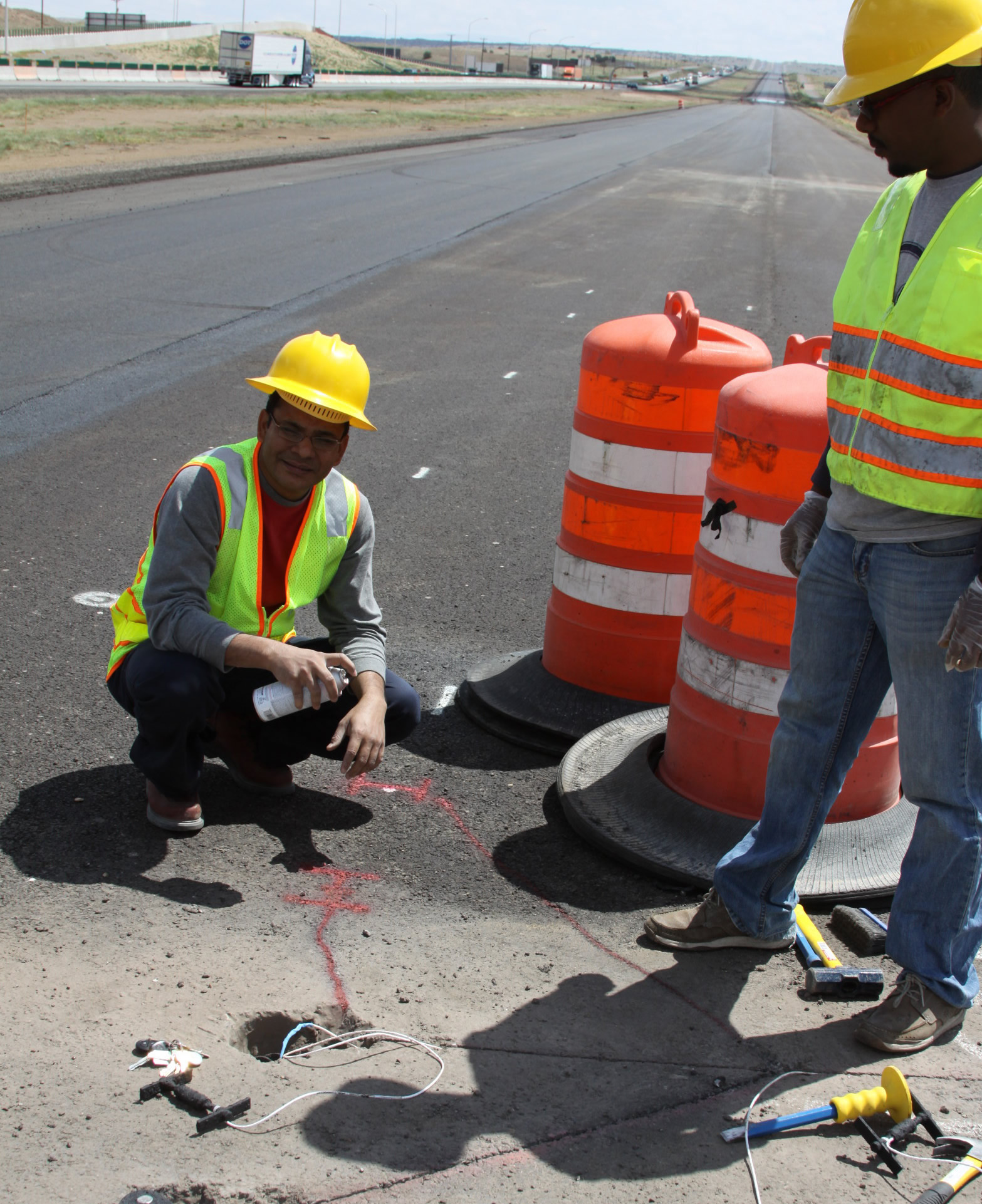Recent News
Final SIRI cohort visits UNM campus
June 30, 2025
Perfetti receives ANS Landis Engineering Achievement Award
June 26, 2025
Engineering a new treatment for ovarian cancer
June 24, 2025
UNM engineers win 2nd place at RMWEA design competition
June 20, 2025
News Archives
Paving for the Future
October 8, 2012
 10-08-12 – People passing the Route 66 Casino as they drive east on I-40 toward Albuquerque may not look twice at a small box and a solar panel on the side of the road, but it’s an important part of keeping them moving smoothly down that interstate. UNM Associate Professor of Civil Engineering Rafiqul Tarefder is working with the New Mexico Department of Transportation and the National Center for Asphalt Technology to understand the stresses, strains, deflections and future of pavement in the state.
10-08-12 – People passing the Route 66 Casino as they drive east on I-40 toward Albuquerque may not look twice at a small box and a solar panel on the side of the road, but it’s an important part of keeping them moving smoothly down that interstate. UNM Associate Professor of Civil Engineering Rafiqul Tarefder is working with the New Mexico Department of Transportation and the National Center for Asphalt Technology to understand the stresses, strains, deflections and future of pavement in the state.
Tarefder has used a half million dollar grant from NMDOT to instrument this section of I-40 that gives him information as it bakes under the desert sun and reacts to the pounding of heavy tractor-trailers day in and day out. “The instruments have been placed in various levels of the roadbed so we can get a better idea of what is happening in real time,” says Tarefder.
One of the thing he is hoping the instruments will tell him is how well the pavement is holding together as the seasons move from hundred degree heat to freezing. Today when construction crews working on the state roads repave the asphalt they frequently reuse recycled asphalt pavement that has been milled from the roadbed, processed and mixed with new rocks.
NMDOT standards say contractors can use up to 35 percent recycled material, which the contractors like because it is cheaper than using all new material. The recycled asphalt has binders and quality aggregate already in the mix, and since binders cost $1,500 a ton, the less new binding materials needed, the cheaper the job. The problem is no one knows the most efficient amount of recycled asphalt needed for the extreme temperatures of the Southwest.
That’s where Tarefder’s research will be valuable. He is experimenting with how much recycled asphalt can be used in paving without compromising a quality roadbed, and whether adding polymers and carbon nanotubes would make the asphalt last longer.
The I-40 instrumented pavement section (7-mile reconstruction project, 2012) was built using recycled asphalt materials. Tarefder says it will take 10 years to be able to understand the influence of the currently allowed percentages of recycled materials on the long-term performances of the pavement. In the meantime he and his students have plenty to do as they experiment with recycled asphalt pavement and new materials in the lab at UNM.
